This article was co-authored by Karina Klimtchuk, L.Ac., DACM, Dipl. OM. Dr. Karina Klimtchuk is a Licensed Acupuncturist, Diplomate of Oriental Medicine, Faculty Member at Yo San University of Traditional Chinese Medicine, and the Owner of Kai Wellness. She specializes in holistic health, Chinese herbal medicine, and functional medicine. Dr. Klimtchuk also helps patients through emotional and spiritual trauma. She holds a BA in Psychology and Sociology from The University of Massachusetts, Boston, a Master's from Emperor's College in Santa Monica, CA, and a Doctorate of Acupuncture and Chinese Medicine (DACM) from Pacific College of Oriental Medicine.
There are 8 references cited in this article, which can be found at the bottom of the page.
wikiHow marks an article as reader-approved once it receives enough positive feedback. In this case, 84% of readers who voted found the article helpful, earning it our reader-approved status.
This article has been viewed 462,796 times.
Acupressure is a form of alternative medicine that uses the fingers to gradually press key healing points in the body. The foundation behind acupressure is that when you trigger certain pressure points in your body, it helps to release tension, increases circulation, reduces pain, and develops spirituality and vibrant health. If you want to try alternative medicine for foot pain, acupressure may be for you.[1]
Things You Should Know
- Look up a free acupressure chart online so you can see the exact location of each pressure point.
- Locate the Kidney Meridian points and Bladder Meridian points on the chart. Specific points include BL-60, Fuliu KI-7, and Weizhong BL-54.
- Press on each point firmly for 30 seconds to 2 minutes. Use pressure, but don't press so hard that it hurts.
Steps
Treating Heel Pain with Acupressure
-
1Obtain Acupressure charts. These charts show the exact location of the points described below and unless you are very familiar with acupuncture points, you’ll need the charts to locate the correct pressure points in your body. Check the following website for free acupuncture charts:
- Chiro.org
- Qi-journal.com
-
2Practice the two different techniques of acupressure. Acupressure points are manipulated in two different ways: by either pressing (reinforcing) or reducing them.[2]
- Pressing technique: Use your fingers or something blunt (such as a pencil eraser at the end of a pencil) to press the particular point between 30 seconds to two minutes. Shorter pressures can be used and even a few seconds can provide relief.
- Reducing technique: Place your finger over a point and turn a finger in counter-clockwise direction for one to two minutes.
- Use enough pressure to feel the pressure but not too much (you should not feel pain).
- For each acupuncture point mentioned below, use one or both of the techniques mentioned above from 30 seconds to two minutes per point (unless directed otherwise).
- Don't worry—acupressure is really easy for people to use on themselves.[3]
Advertisement -
3Manipulate the Kidney Meridian points. These are located on the bottom of the foot. Consult the acupuncture charts to find these points in your body and manipulate one or several of the following points:
- Fuliu KI-7 (on the front, inner side of the achilles tendon) and Jiaoxin KI-8 (the front, inner side of the rounded border of the shinbone, above the ankle) points. Apply pressure to these two points at the same time.
- Dazhong KI-4 (behind and under the medial malleolus, or the bony knob on the inner side of your ankle) and Shuiquan KI-5 (on the inner side of the heel, in a depression below but in front of KI-4) points.
- Yongquan KI-1 (on the sole of the foot) together with the Liver Meridian point Taichong LV-3 (on back of the foot). Applying acupressure to these two points helps treat tendons and ligaments.
-
4Manipulate the Bladder Meridian points. These acupuncture points are indicated for diseases in the lower limbs as well as in the head, neck, eyes, back, groin.
- Manipulate the following two points: Weizhong BL-54 (at the very top of your hamstring, closer to the inner part of the back of your leg) and Chengshan BL-57 (below the calf muscle) points.
-
5Stimulate the local and adjacent points at the site of injury. The Shimian M-LE 5, located at the center of the heel, is a local point that acts as the target zone of the plantar fascia and its attachment to the heel bone.
- Apply acupressure for 30 seconds to 2 minutes to the Shimian M-LE 5.
-
6Use acupressure points to release endorphins. Activating pressure points relieves pain and relaxes muscular tension releasing endorphins. These endorphins are similar to morphine in the way of numbing the pain. By applying pressure to the Liver Meridian LV-3 and Gall Bladder Meridian GB- 41 points, you can enable your body to produce its own natural painkillers.[4]
- In Chinese medicine, the liver is an energy organ and when someone has liver imbalances they are more susceptible to tendon inflammation and continuous stress injury.
- Taichong LV-3 is located on the top of the foot between the first and second metatarsal bones.
- Zulinqi GB-41 is also on the top of the foot between the fourth and fifth metatarsal bones.
- Relieve pain by pressing your fingers firmly and steadily on the two points for two minutes. Breathe deeply while you do this.
Treating Ankle Pain with Acupressure
-
1Manipulate the “Illuminated Sea“ point. This pressure point (also known KI-6) can be found on the inner side of the ankle, one thumb width below the anklebone. This will help relieve swollen and stiff ankles. [5] [6]
- Place your thumbs one centimeter away from the ankle.
- Apply pressure with both thumbs on both pressure points simultaneously.
-
2Engage the “Qiuxu” point. This acupressure point (also known as GB-40) is located in the large hollow directly in front of the outer anklebone. Manipulating this point relieves ankle problems including sprains, swelling and sciatic pain.
- Press this point with a finger or pencil for one to two minutes, alternating every 60 seconds between light and firm pressure.[7] Eventually you can work up to five to 10 minutes of pressure.
- You can use fingers, knuckles, side of the hand, an eraser on a pencil, etc. to apply pressure. If using your hands, you should change hands every minute or so to avoid being fatigued.
-
3Manipulate the “High Mountains” point. This point (also known as BL-60) is located in the hollow between the outer anklebone and the Achilles tendon. This can help with swollen feet, ankle pain, thigh pain, arthritis in the foot joints, lower back pain, and increase blood flow.[8]
- Place your thumb on the point between the outer ankle bone and the Achilles tendon.
- Press this point for five minutes by releasing the pressure after every thirty seconds for a few seconds.
- Repeat two or three times at night every day for faster relief.
- This point is contraindicated during pregnancy.
-
4Try working the “Calm Sleep” point. This point (also known as BL-62) is the first indentation directly below the outer anklebone. It is one-third the distance from the outer anklebone to the bottom of the heel. This will help relieve heel pain, ankle pain, insomnia, and general foot aches. [9]
- Apply the reducing technique to this point for one to 2 minutes.
- Repeat everyday if needed.
Expert Q&A
-
QuestionAre acupuncture and acupressure points the same?
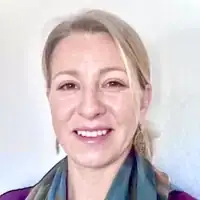 Karina Klimtchuk, L.Ac., DACM, Dipl. OMDr. Karina Klimtchuk is a Licensed Acupuncturist, Diplomate of Oriental Medicine, Faculty Member at Yo San University of Traditional Chinese Medicine, and the Owner of Kai Wellness. She specializes in holistic health, Chinese herbal medicine, and functional medicine. Dr. Klimtchuk also helps patients through emotional and spiritual trauma. She holds a BA in Psychology and Sociology from The University of Massachusetts, Boston, a Master's from Emperor's College in Santa Monica, CA, and a Doctorate of Acupuncture and Chinese Medicine (DACM) from Pacific College of Oriental Medicine.
Karina Klimtchuk, L.Ac., DACM, Dipl. OMDr. Karina Klimtchuk is a Licensed Acupuncturist, Diplomate of Oriental Medicine, Faculty Member at Yo San University of Traditional Chinese Medicine, and the Owner of Kai Wellness. She specializes in holistic health, Chinese herbal medicine, and functional medicine. Dr. Klimtchuk also helps patients through emotional and spiritual trauma. She holds a BA in Psychology and Sociology from The University of Massachusetts, Boston, a Master's from Emperor's College in Santa Monica, CA, and a Doctorate of Acupuncture and Chinese Medicine (DACM) from Pacific College of Oriental Medicine.
Licensed Acupuncturist & Diplomate of Oriental Medicine Licensed Acupuncturist & Diplomate of Oriental MedicineExpert AnswerYes! Both acupressure and acupuncture use the human meridian system, which is a series of energetic pathways inside the body.
Licensed Acupuncturist & Diplomate of Oriental MedicineExpert AnswerYes! Both acupressure and acupuncture use the human meridian system, which is a series of energetic pathways inside the body.
Warnings
- Always consult your doctor first before trying alternative medicine. Foot pain might be caused by other serious conditions, such as a bone fracture.⧼thumbs_response⧽
References
- ↑ http://aim.bmj.com/content/16/2/66.abstract
- ↑ http://www.eclecticenergies.com/acupressure/howto.php
- ↑ Karina Klimtchuk, L.Ac., DACM, Dipl. OM. Licensed Acupuncturist & Diplomate of Oriental Medicine. Expert Interview. 25 August 2021.
- ↑ http://www.acupressure.com/blog/index.php/pain-relief-acupressure-foot-points-lv-3-gb-41/
- ↑ http://www.modernreflexology.com/acupressure-points-cure-feet-ankle-pain/
- ↑ http://www.innerpath.com.au/Shiatsuacupressure/Acupressure-points.html
- ↑ http://www.acupressure.com/blog/index.php/ankle-sprain-acupressure-points-for-healing-ankle-pain-ankle-stiffness-sciatica-top-of-foot-pain-and-swollen-ankles/
- ↑ http://www.modernreflexology.com/acupressure-points-cure-feet-ankle-pain/
- ↑ http://www.modernreflexology.com/acupressure-points-cure-feet-ankle-pain/
About This Article
The best way to use acupressure points for foot pain depends on what part of your foot hurts. To treat heel pain, use the pressing and reducing techniques to manipulate the Kidney Meridian points and the Bladder Meridian points. If the pain is in your ankle, manipulate the Illuminated Sea and Qiuxu points. Also, manipulate the High Mountains and Calm Sea points to relieve ankle pain. To get information from our Medical reviewer about where different points are located and how to use different techniques, scroll down!






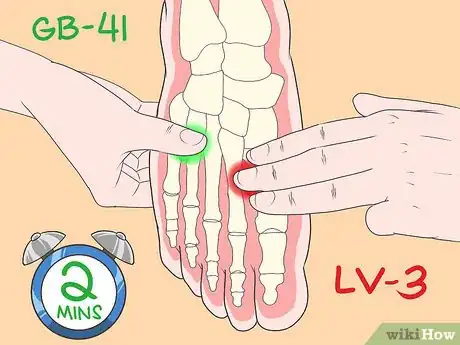




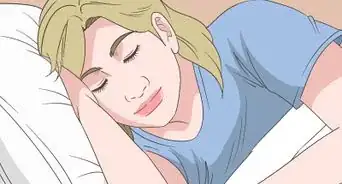
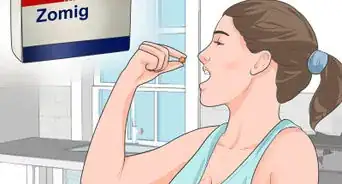
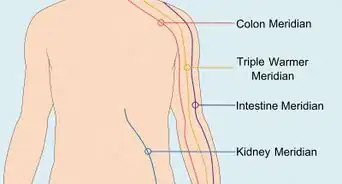
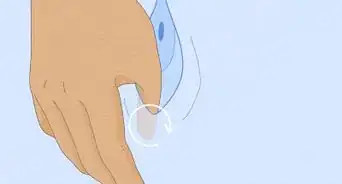
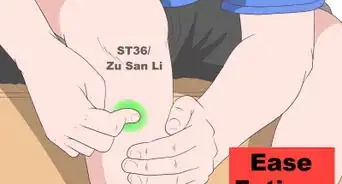
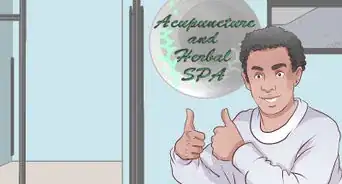
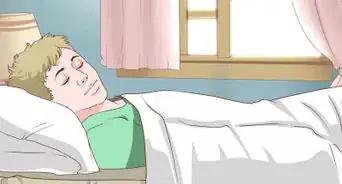
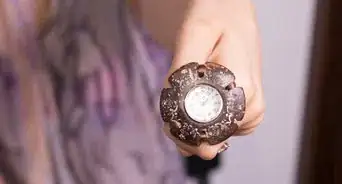









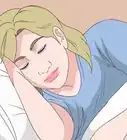

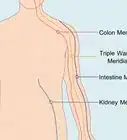
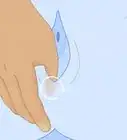



































Medical Disclaimer
The content of this article is not intended to be a substitute for professional medical advice, examination, diagnosis, or treatment. You should always contact your doctor or other qualified healthcare professional before starting, changing, or stopping any kind of health treatment.
Read More...